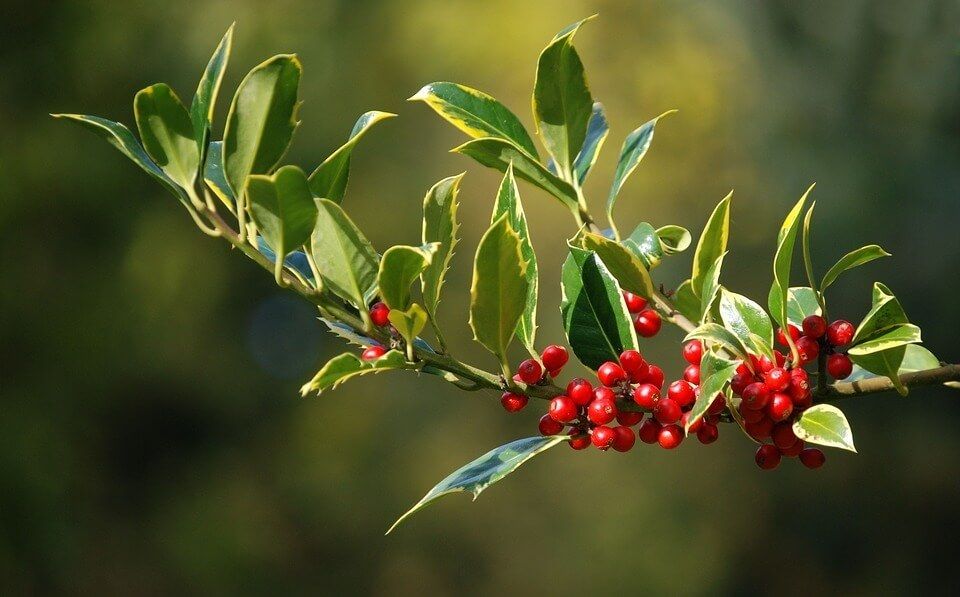
10 Great Plants for Winter Interest
Here are ten of our favorite plants to spruce up your property for some eye-catching winter interest!
1. Crocus
One of the most popular of winter plants is the Crocus. These little purple bloomers flower in early spring and their bright color offers a striking contrast to a dull winter landscape as well as against the white snow. The best place to plant them is in a place that gets some sun, but not too much of it because they are an understory plant.
2. Winterberry Holly
Winterberry is a type of holly that loses its leaves in the fall so that the bright red berries can stand out amongst the winter landscape. Once you see the berries, you will know why this is one of the most popular plants used in winter gardens. If you like birds, you can rest assured that those that come out in winter will thank you for the berries you provide them. It is also known to be deer resistant, so you can rest assure you can enjoy this bright red beauty all winter long.
3. Red Twig Dogwood
Like the Winterberry Holly, Red Twig Dogwood is another winter time old favorite. The plant’s striking red stems are not just attractive on their own, they make a great accent when combined with evergreens. The color remains all year but in spring and summer the new leaves will need to be regularly removed to reveal the stems. The brightness of the plants color depends on the amount of sun it receives. It is also a great plant for steep slopes and screenings.
4. Firethorn
Firethorn is a woody perennial that is an attractive sight all year round. It has small clusters of sparkling white flowers in spring and bright glossy green leaves the rest of the year. The small pea like berries, which can be either orange or yellow and remain throughout most of the winter. Because of its thorns for protection and berries for food, birds seem to love this plant especially during the winter months.
5. Harry Lauder’s Walking Stick
Talk about a show stopping plant! This unusual specimen is a very interesting winter plant because of its crazy corkscrew branches. While this shrub does flower in the spring, what makes it such an attractive winter plant are the winding and twisted branches that add a pleasantly eerie touch to a winter landscape. This plant grows best in a mixture of bright sunlight and shade.
6. River Birch
The River Birch tree shows off its beautiful fall color in autumn and when the weather turns really cold, the cinnamon pealing bark offer a striking contrast to a backdrop of evergreens. It is often used as the focal point when up lit by landscape lighting.
7. Paperbark Maple
Like the River Birch, the Paperbark Maple’s curls of copper colored bark peel off from all over and make a pleasing sight, both while on the plant or while lying on the ground. The green leaves of summer turn into an eye catching cinnamon shade in the fall. It grows best in partial sunlight.
8. Heather
Heather has always been a very popular plant in Europe but has been largely overlooked in this country until recently when its appeal as a winter plant was recognized. This plant blooms all year and offers beautiful lavender flowers in summer and fall. In winter the thick foliage makes an appealing contrast to the more delicate blooms of other winter plants. Planting should be done in winter with mulch in a place that attains the maximum sunlight.
9. Hollies
Hollies have always been associated with winter. With hundreds of varieties to choose from, it is hard not to find the perfect one for your landscape. They range from small shrubs to huge trees of up to 80 feet, there is a type of holly for every garden and winter landscape. Its bright berries and thick foliage ensure that this is one plant that always catches the eye.
10. Hellebore
Another winter plant that is available in a wide range of varieties is Hellebore. The bloom are an unmistakable cup shape and the wide range of colors mean that you will be able to find one that compliments the rest of your winter garden. The plant grows best in part to full shade.

